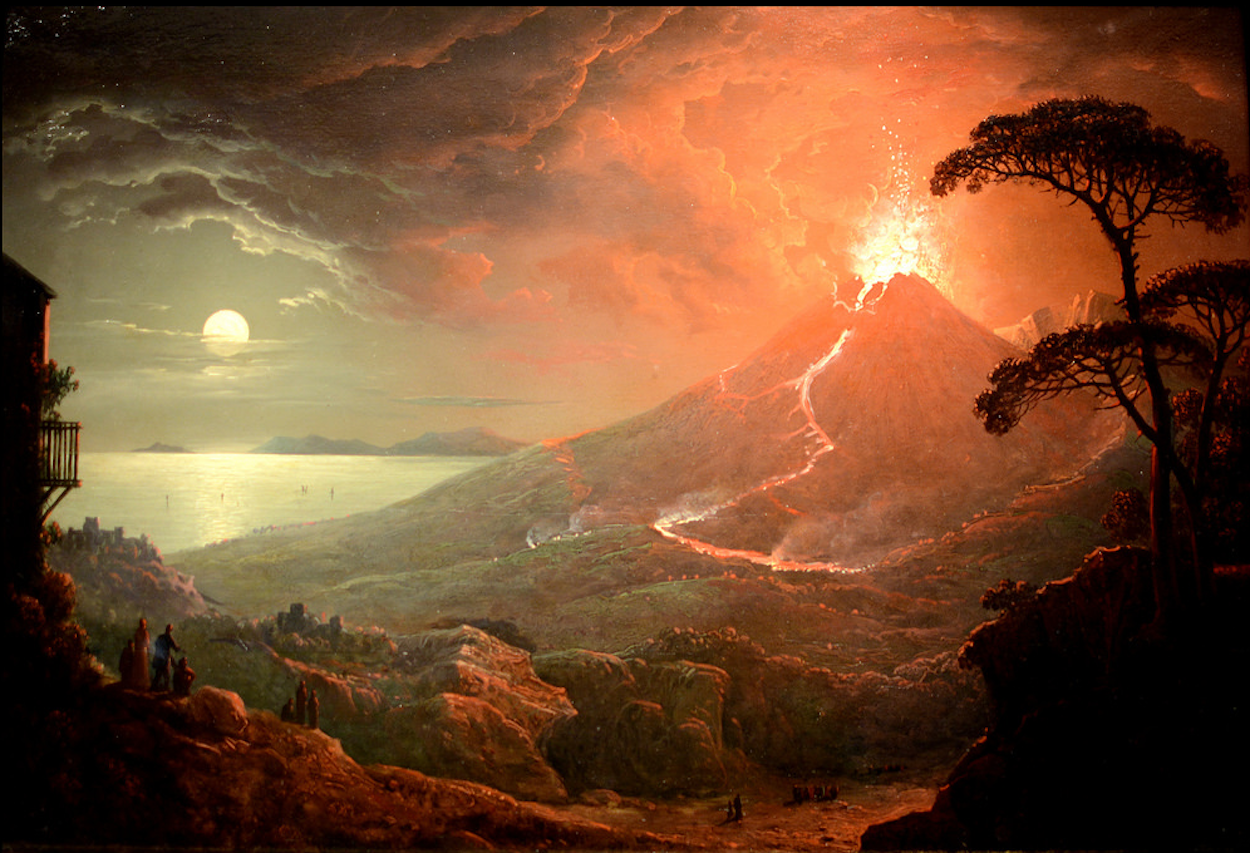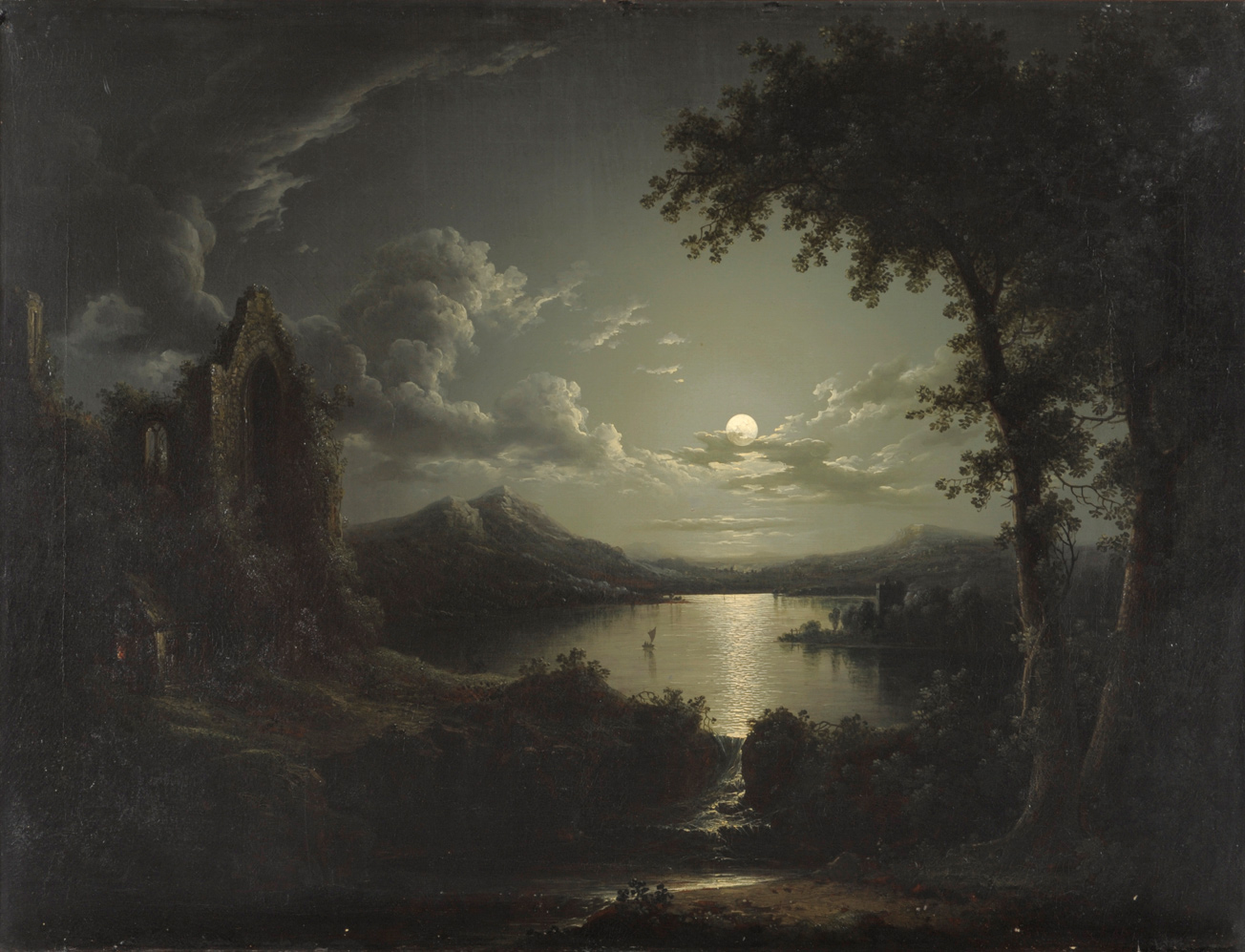This jewel of a painting fascinates on many levels. Sebastian Pether (1790-1844) was a second generation landscape painter who specialized in nighttime settings and luminous moonlight. He married young, had nine children, and focused his efforts on supporting his large family through dealer requests. Though admired and appreciated, his three submissions to the Royal Academy were rejected. He died a pauper and his works are relatively rare. In spite of his hardscrabble personal life, he created mature works with masterful handling of color, light, and composition.
The Eruption of Vesuvius is a small painting that packs a big punch thanks to the dramatic composition and contrasting light sources. The left side of the painting is restrained, almost pastoral, and bathed in cool, silvery moonlight. The right side is a complete contrast with an erupting volcano and ribbons of lava flowing downwards. The heat radiates from the explosion and bounces off the roiling clouds of vapor. We join the tiny people in the lower-left corner who watch the eruption in rapt amazement. Pether captures a vision perhaps inspired by Pliny the Younger’s eyewitness account from the the eruption in 79 C.E. that destroyed Pompeii and Herculaneum. Vesuvius has erupted many time, frequently with impressive fury and destruction. The artist masterfully reminds us of the beautiful and terrible power of nature.
- Brad Allen
We encourage you to read about another masterpiece, which belongs to The Nelson-Atkins Museum of Art - "Saint John the Baptist" by Caravaggio. Enjoy!


 Sebastian Pether
Sebastian Pether